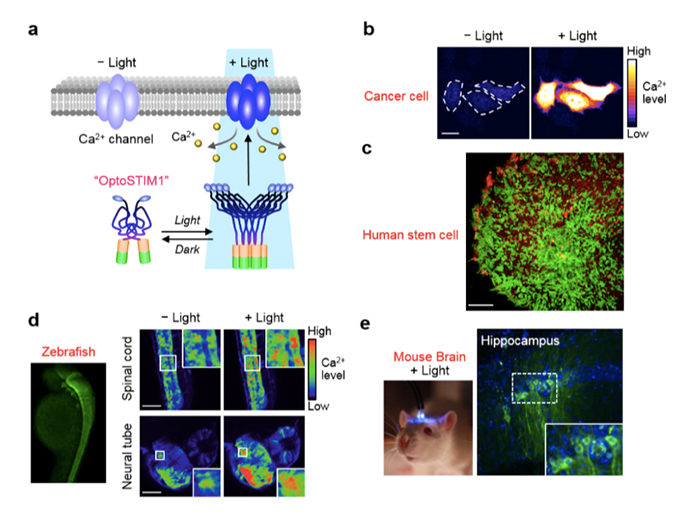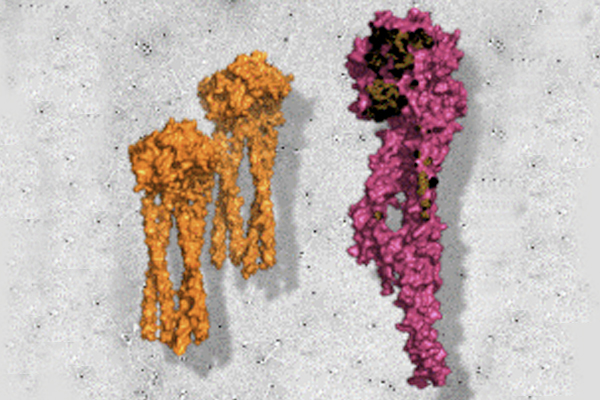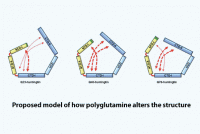Morse code enables information to be transmitted as a series of on-off tones and clicks, which can be decoded into words and texts. In a somewhat similar manner, calcium (Ca2+) signals are encoded as distinct patterns of input with varying amplitudes, frequencies, and durations. As Ca2+ is involved in literally every single cellular process in our body, it has been tempting to manipulate intracellular Ca2+ levels for research or therapeutic purposes. Some might say that it is God’s area due to technical difficulties.
Recent work, led by Professor Won Do Heo at the Korea Advanced Institute of Science and Technology (KAIST), succeeded in developing a blue-light-dependent endogenous Ca2+ channel activator, named OptoSTIM1 (an optically activated STIM1 protein). In this work, a light-responsive oligomerization plant protein, Cryptochrome2, was conjugated with a Ca2+ channel activator, STIM1, which binds to Ca2+ channels only when oligomerized by themselves. Depending on the power and exposure time of the blue light, Ca2+ levels in the cell could be quantitatively controlled, and varied levels of Ca2+ could be decoded into different functional outcomes, such as actin cytoskeleton remodeling or gene expression just as different Morse code patterns can be deciphered into differed texts.
The broad utility of OptoSTIM1 has been proven by the research team led by Professor Heo through modulating Ca2+ levels in various human and mouse cell lines including human embryonic stem cells, potentially fostering advances in stem cell engineering. Additionally, Ca2+ levels could be manipulated in live animals such as zebrafish or in the brains of mice where increases in Ca2+ levels in neurons resulted in the elevated learning capacity of mice, suggesting that Ca2+ plays a significant role in the memory formation process.
Recent evidence suggests that abnormal Ca2+ channels activity is involved in various human diseases, thus the specific control of Ca2+ channels by OptoSTIM1 will provide a robust cell- or animal-based screening platform for identifying drug candidates that target Ca2+ channels. OptoSTIM1 also offers potential optogenetic therapeutic means to treat diseases associated with Ca2+-deficiency.
This research was conducted in collaboration with groups under the guidance of Professor Yong-Mahn Han and Professor Daesoo Kim.
This research was supported by the Institute for Basic Science (no. IBS-R001-G1), the NRF Stem Cell Program (2011-0019509) funded by MSIP, the Republic of Korea, the KAIST Institute for the BioCentury, and the National Leading Research Laboratory Program by the Ministry of Science, ICT and Future Planning (2011-0028772 to Daesoo Kim).
This work is soon to be published in Nature Biotechnology.

a) Schematics of Ca2+ channel activator (OptoSTIM1) b) Increase of Ca2+ level in human cancer cells c) Expression of OptoSTIM1 (green) in human embryonic stem cells (hESCs) d) Elevation of Ca2+ in the central nervous system of zebrafish embryos e) Selective expression of OptoSTIM1 (green) in the hippocampal region of a mouse brain








